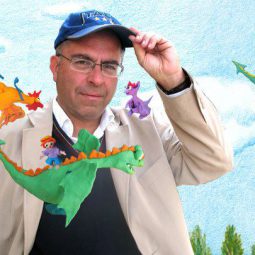
Where Do Ideas Come From?
Human Beings- Aren’t We the Cleverest of Animals?
Creativity and personality
Learning from Failures and Success
Methods for Creative Thinking
A Long-term Economic Perspective on Recent Human Progress
by Gary M. Walton
Professor Emeritus of Economics,
University of California, Davis and President, Foundation for Teaching Economics
Genius and madness
Creativity – Wikipedia
https://en.wikipedia.org/wiki/Creativity#Aspects
Ancient cultures either did have definitions for ‘creativity’ or attributed it as bestowed from above.
The Muses /ˈmjuːzᵻz/ (Ancient Greek: Μοῦσαι, Moũsai; perhaps from the o-grade of the Proto-Indo-European root *men- “think”[1]) in Greek mythology are the inspirational goddesses of literature, science, and the arts. They were considered the source of the knowledge embodied in thepoetry, lyric songs, and myths that were related orally for centuries in these ancient cultures. They were later adopted by the Romans as a part of their pantheon.
In current English usage, “muse” can refer in general to a person who inspires an artist, writer, or musician.[2]
Prof. Glenn D. Wilson, Gresham College, Creativity and Madness
the thin line dividing genius and madness
Dr. Charles Limb
James Melvin Rhodes
https://en.wikipedia.org/wiki/James_Melvin_Rhodes
4 p’s of creativity
4p’s of creativity
There are many theories for creativity, just want to discuss a few
Conceptual blending[edit]
In The Act of Creation, Arthur Koestler introduced the concept of bisociation — that creativity arises as a result of the intersection of two quite different frames of reference.[42]This idea was later developed into conceptual blending. In the ’90s, various approaches in cognitive science that dealt with metaphor, analogy and structure mapping have been converging, and a new integrative approach to the study of creativity in science, art and humor has emerged under the label conceptual blending.
individual – genetic makeup
environment – family, religion, culture, friends, pressures, change
education, tools, skill set –
professional career
Wallace
The insights of Poincaré and von Helmholtz were built on in early accounts of the creative process by pioneering theorists such as Graham Wallas[20] and Max Wertheimer. In his work Art of Thought, published in 1926, Wallas presented one of the first models of the creative process. In the Wallas stage model, creative insights and illuminations may be explained by a process consisting of 5 stages:
- (i) preparation (preparatory work on a problem that focuses the individual’s mind on the problem and explores the problem’s dimensions),
- (ii) incubation (where the problem is internalized into the unconscious mind and nothing appears externally to be happening),
- (iii) intimation (the creative person gets a “feeling” that a solution is on its way),
- (iv) illumination or insight (where the creative idea bursts forth from its preconscious processing into conscious awareness);
- (v) verification (where the idea is consciously verified, elaborated, and then applied).
Wallas’ model is often treated as four stages, with “intimation” seen as a sub-stage.
Wallas considered creativity to be a legacy of the evolutionary process, which allowed humans to quickly adapt to rapidly changing environments. Simonton[21] provides an updated perspective on this view in his book, Origins of genius: Darwinian perspectives on creativity.
In short, the cognitive part of the brain has to do with intelligence, the affective deals with emotions and the conative (could substitute ‘behavior’ which is a more modern term)
drives how one acts on those thoughts and feelings.
Published: Aug 17, 2016
Latest Revision: Apr 17, 2017
Ourboox Unique Identifier: OB-179539
Copyright © 2016








